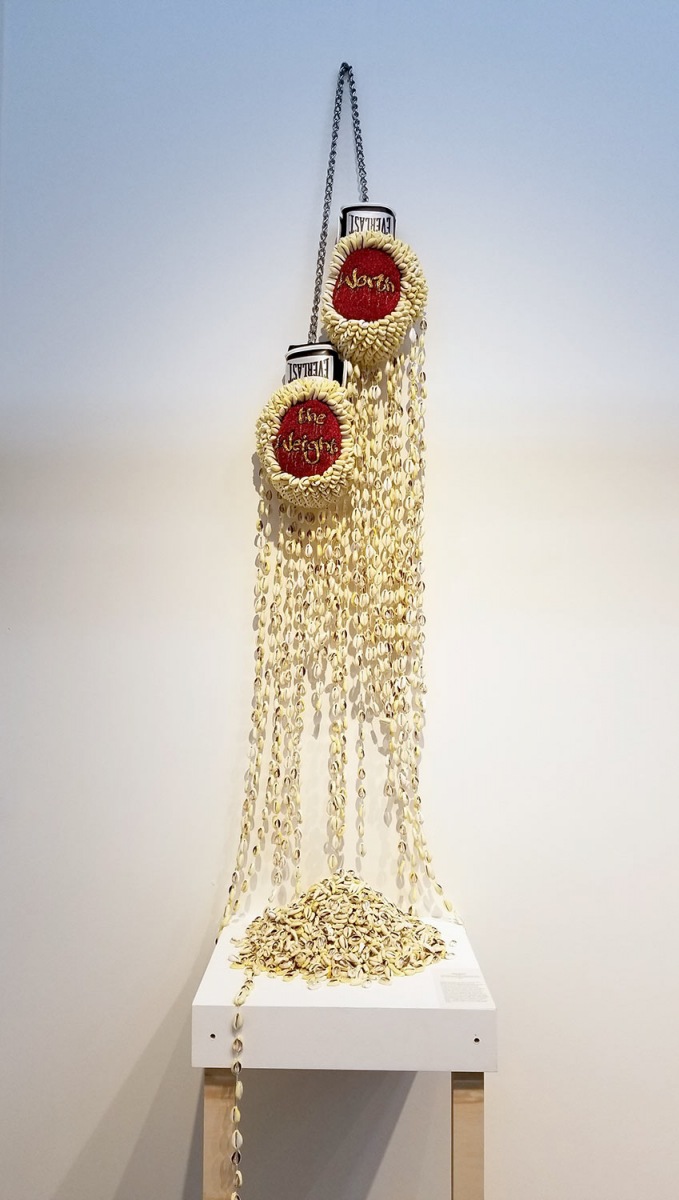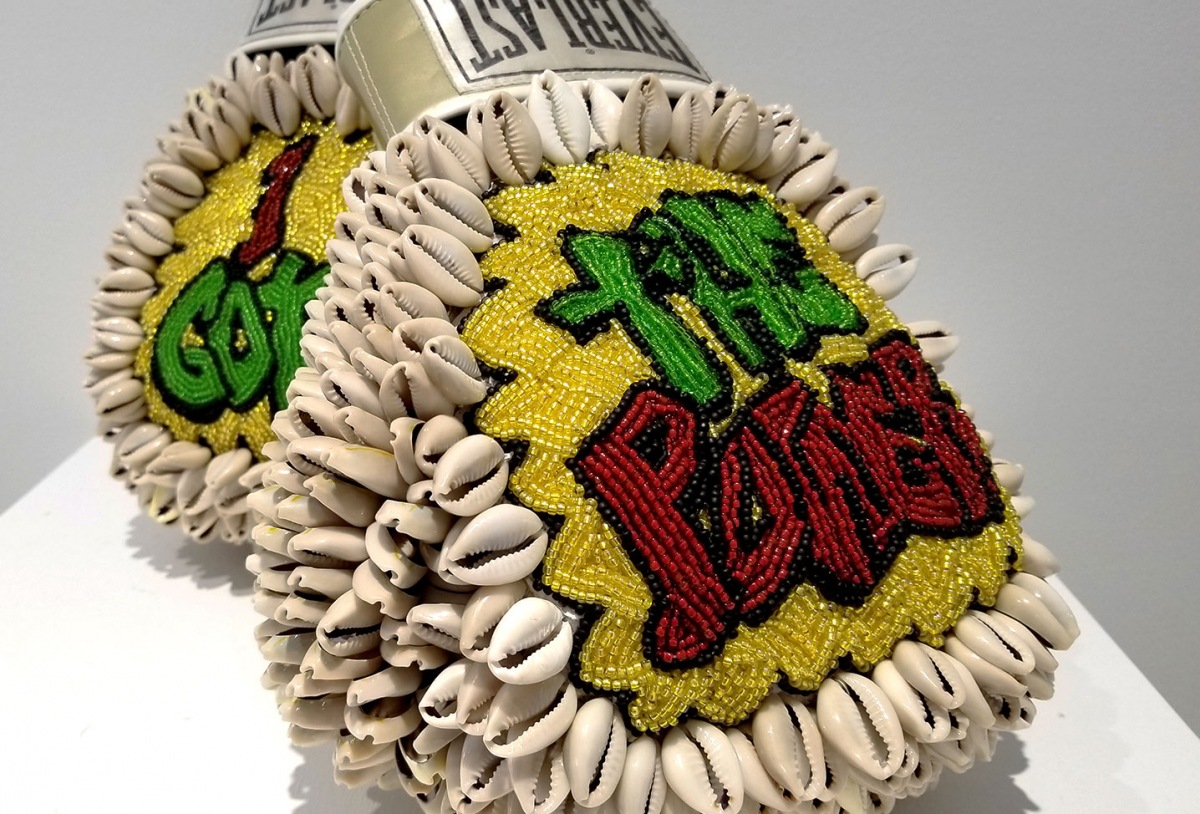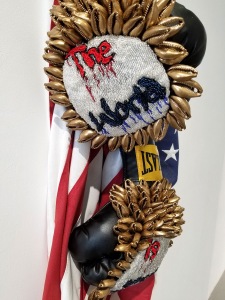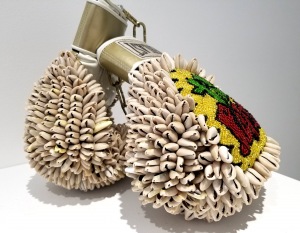Work
Videos
BIO
Demeti Broxton’s textile sculptures reflect his connection to the sacred art of the Yoruba people of Nigeria, the beading traditions of the New Orleans Mardi Gras Indians, and his love of hip hop and graffiti. He understands his work as an ongoing investigation of cultural continuities from Africa to America and is particularly interested in how these ancient cultural forms find their way into mainstream culture. Thus, elements of Nigerian royal regalia, sports equipment with significant ties to African American history, Southern voodoo/hoodoo traditions, and quotes from hip-hop artists are seamlessly blended with beaded patchwork employing the same techniques used by the New Orleans Mardi Gras Indians.
On view are boxing gloves and robe, hand-embroidered with beads, using a backstitch, an adaptation of Yoruba beading traditions and Native American beading techniques. He also weaves in objects of power and protection, such as High John the Conqueror root, a staple in American Hoodoo traditions and other hidden talismans. Broxton’s work connects contemporary hip-hop artists to the tradition of the Oba, where lyrical quotes and personas embody superhuman power and even some, like Pusha T, who call themselves gods.
In the Yoruba and New Orleans tradition, men are the creators of beaded regalia; however, this is not the case in mainstream American culture where beading and weaving techniques are often seen as women’s work. Broxton’s mash up of bead weaving, which quotes hypermasculine phrases from hip-hop songs, creates an intentional tension and contrast between delicate and powerful, beautiful and dark, masculine and feminine. The use of cowrie shells adds an additional layer of complexity to the underlying ideas in Broxton’s work. Cowrie shell sculptures in the Yoruba tradition are called Ilé Ori or House of the Head Shrines. Ilé Ori are shrines to a person’s spiritual essence; protected by a shield of cowrie shells. During the height of the Transatlantic Slave Trade, human beings were purchased with cowrie shells brought by Portuguese slave ships. In some cases, owning an Ilé Ori could protect a wealthy Yoruba person from being sold into slavery. This juxtaposition of beauty, pain, power, and influence can be seen throughout Broxton’s series; as the shells in Broxton’s artwork represent the violence and wealth of the slave trading economy – a heritage that continues in sports and hip-hop lyrics.
Demetri Broxton is a mixed media artist of Louisiana Creole and Filipino heritage. He was born and raised in Oakland, CA and earned a BFA with an emphasis in oil painting at UC Berkeley in 2002. Demetri is influenced by craft and folk traditions and is passionate about infusing these traditions into fine art.



















































